After crossing the border, we started heading east…
Mungindi was the last town we left in Queensland and also our first in New South Wales. In fact, the border runs right through the middle of the town, making it the only town in the southern hemisphere with the same name in two states.
At the border crossing we had to top up our water tanks and fill the car with diesel. Mungindi is one of many towns registered as an RV Friendly Town. This is signposted on the way into the town. These towns provide easy parking for large rigs close to the CBD, access to potable water to fill water tanks, and easily accessible dump points. The spot below was a drive-through water fill-point provided free by Mungindi, not requiring any fancy maneuvers.
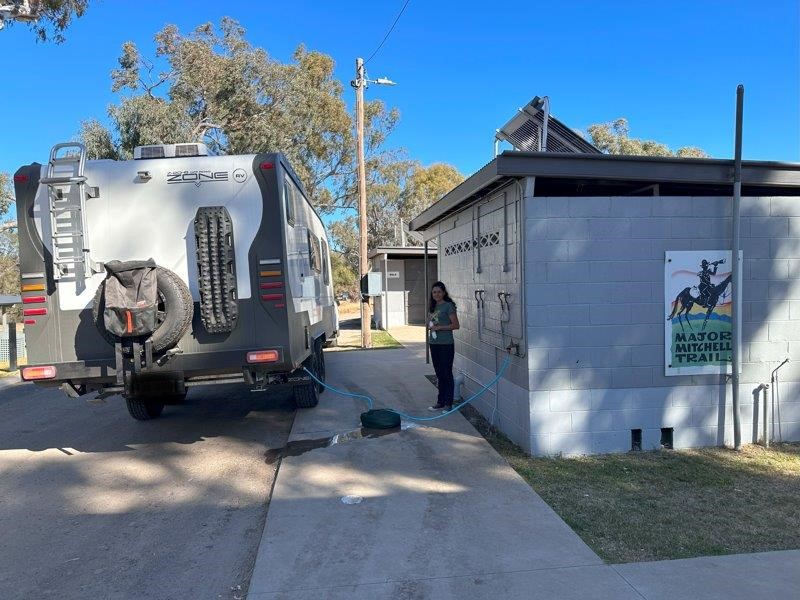
Our next free camp was on the Barwon River. On the way there, the route proposed by Google Maps took us on a 68km dirt road. In some places the track was almost invisible and barely passable. On the way, we saw many kangaroos and emus. We also saw a few wild boars. The farmers obviously got to them before we did.
We arrived at the camp covered in dust, but on the bright side, we had the place to ourselves for the duration of our stay.
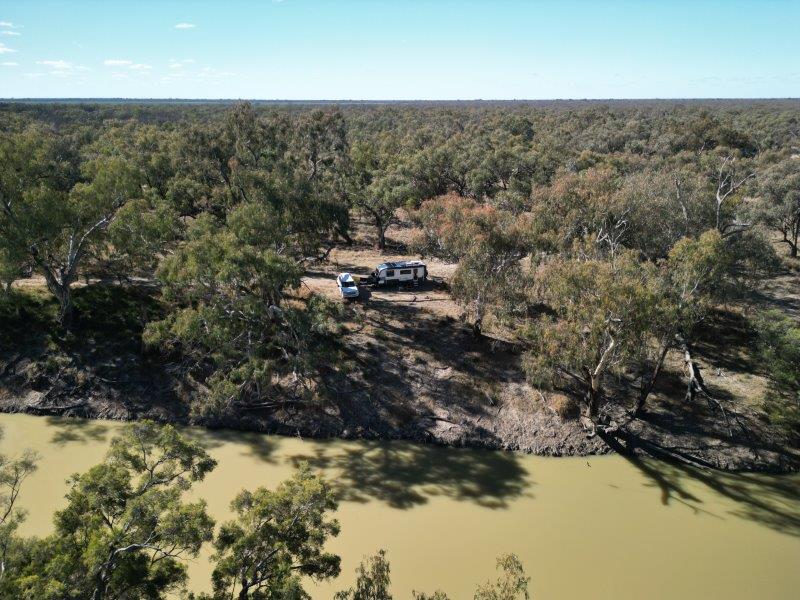
We also visited the Collymongle Carved Trees exhibition, preserving some old aboriginal tree carvings.
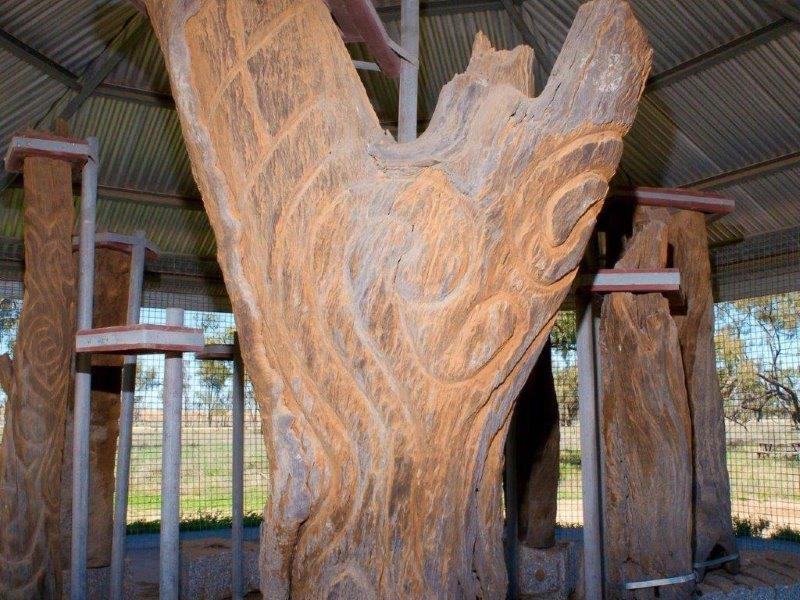
The only people we saw during our stay were three fisherman cruising down the river and, the day before we left, old mate stopped at our campsite for a chat – as you do. He told us that one of the most gruesome abductions and murders in Australian history happened very close to our camp site. I initially took this with a grain of salt and Googled it that night. The sad history of the murder of Virginia Morse, at the hands of Kevin Crump and Allan Baker at their Narrabri farm on November 4, 1973, was well documented. We slept with one eye open the last night 🙂
On the way out the next day we drove through the gully and past the old homestead where the abduction took place.
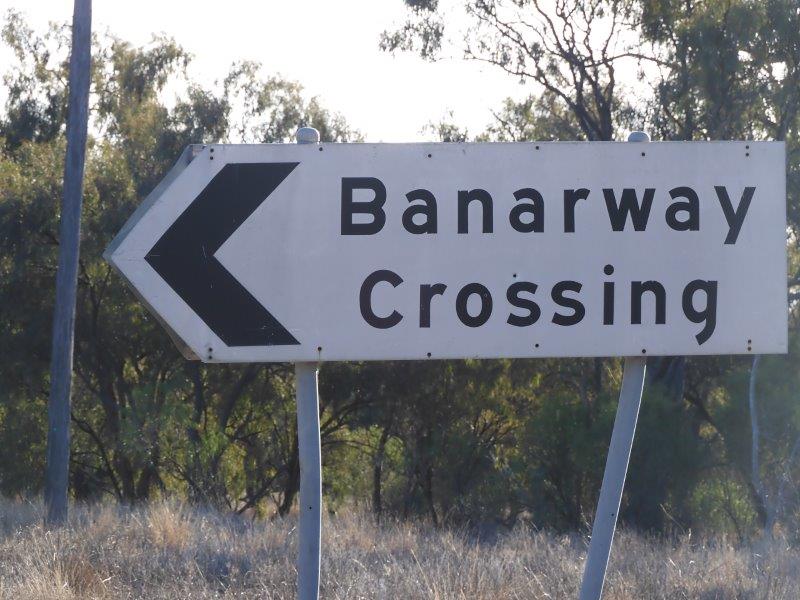
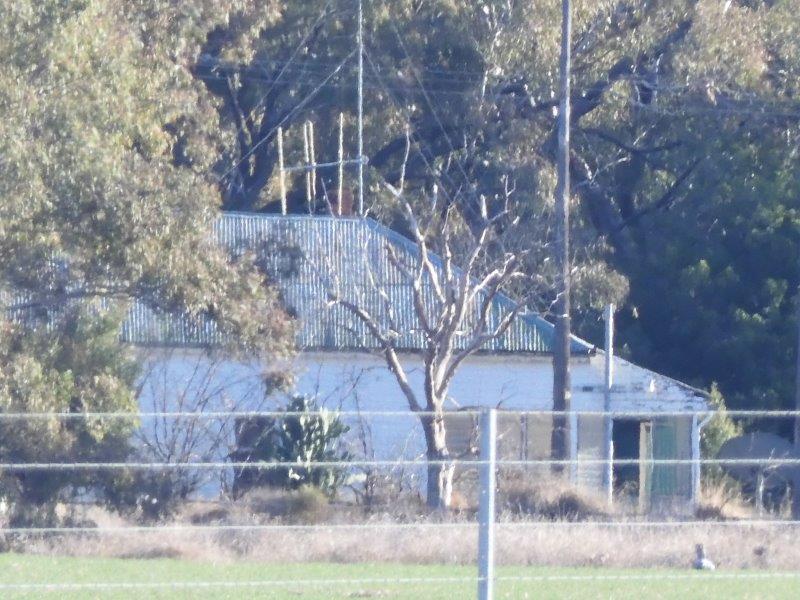
Our next stop was another free camp in Walgett: Alex Trevallion Park. We were greeted by Galahs and Red-tailed Black-Cockatoos …
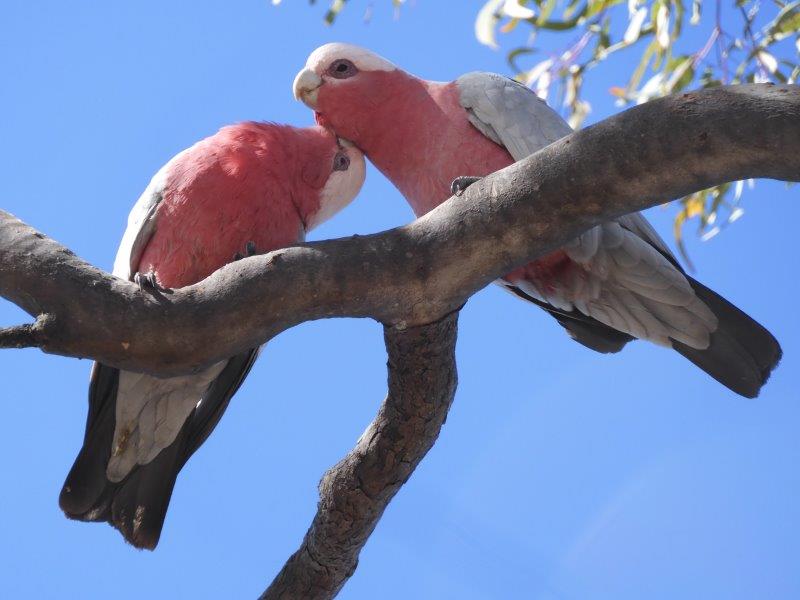
This town has hot artesian baths and some murals by Frank Wright, a local Aboriginal Artist, and Lightning Ridge artist John Murray. Note the detailed reflection of the Outback in the emu’s eyes.
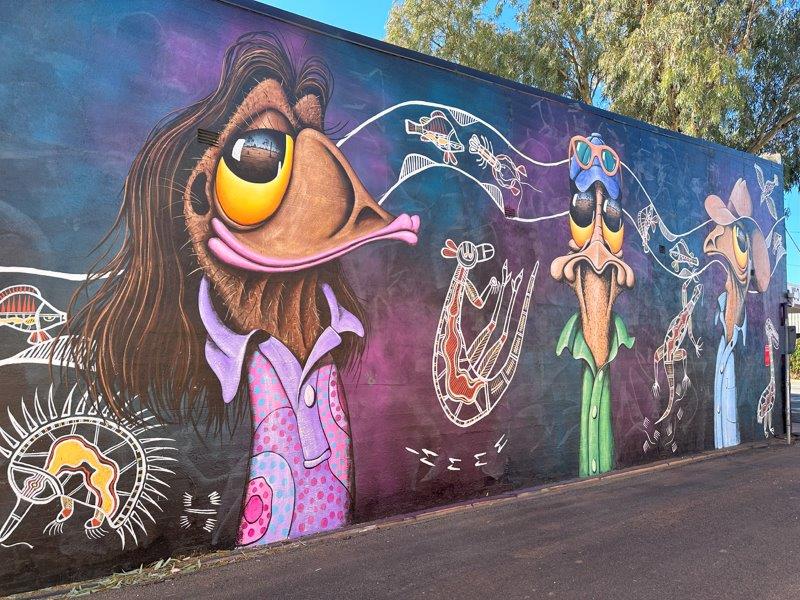
While in Walgett, we went up to Lightning Ridge for a day-trip. What a quirky town! It derives its name from a shepherd, his dog, and 200 sheep struck and killed by lightning around 1870.
This town became known as the home of one of the world’s rarest gemstones: the black opal. The value of black opals attracted fossickers and prospectors from all over the world. This is one of the only towns in Australia where the population is unknown, as fortune seekers are still passing through trying their luck.
The old diggers hut and fossicking tools are visible in the main street.
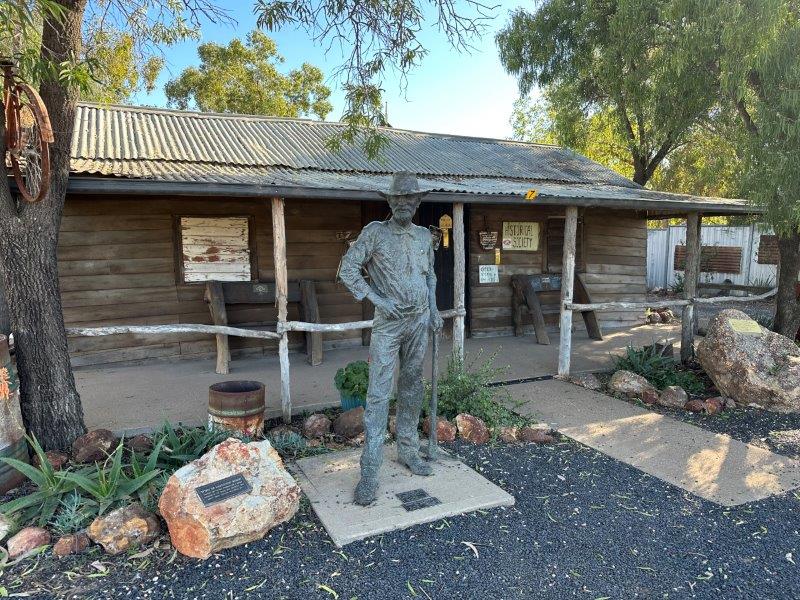
This dugout is at Lunatic Hill and still one of the larger open cut mines.
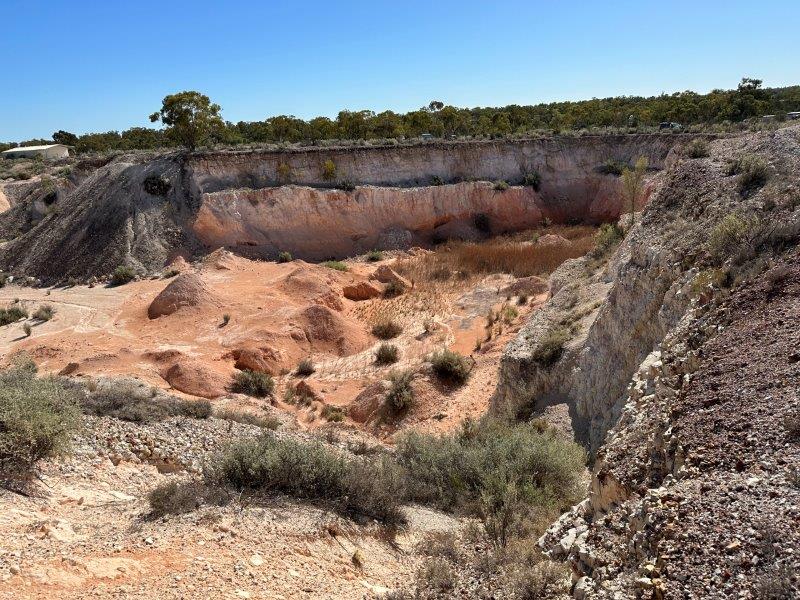
Lightning Ridge has the quirkiest houses, and it is easy to see who struck it lucky with the opals. This castle caught our eyes and is now available on Airbnb for a stay.
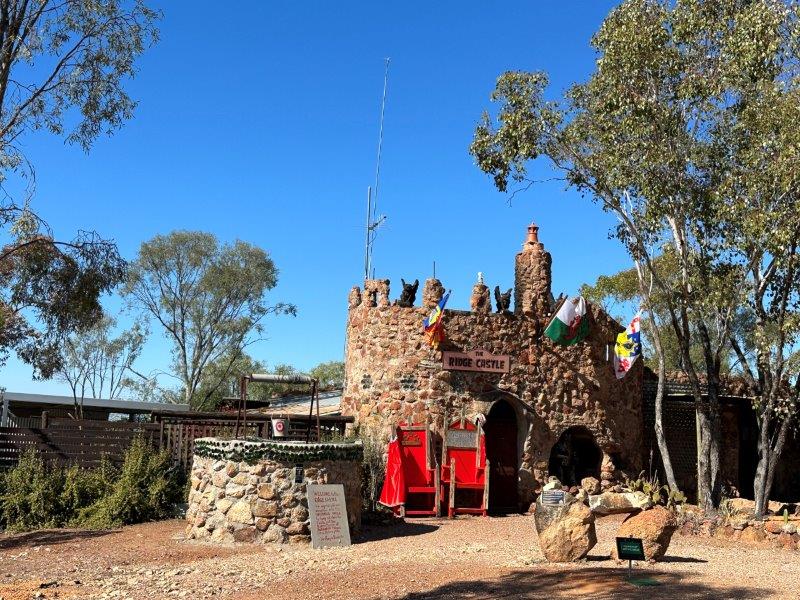
There is not a lot of grass out west and if you have it, you need to protect it.
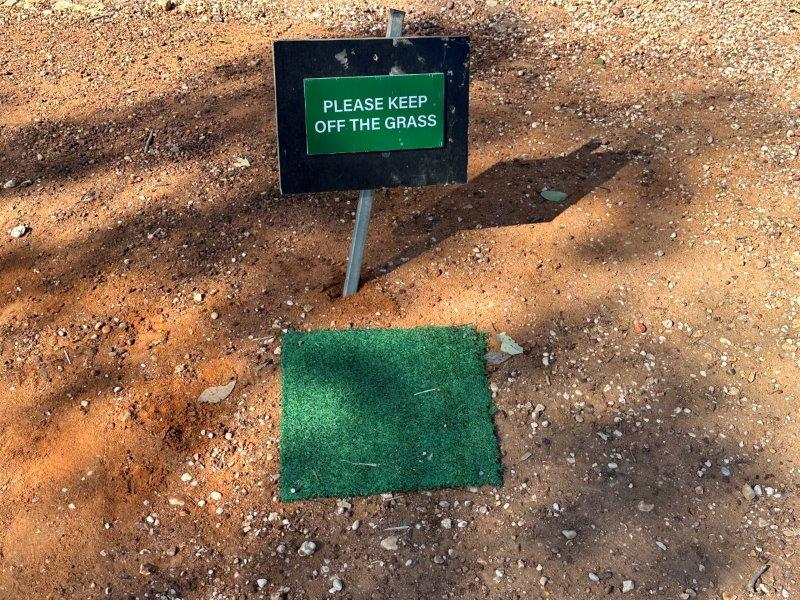
This was where the mining started. Feels like you are on the moon.
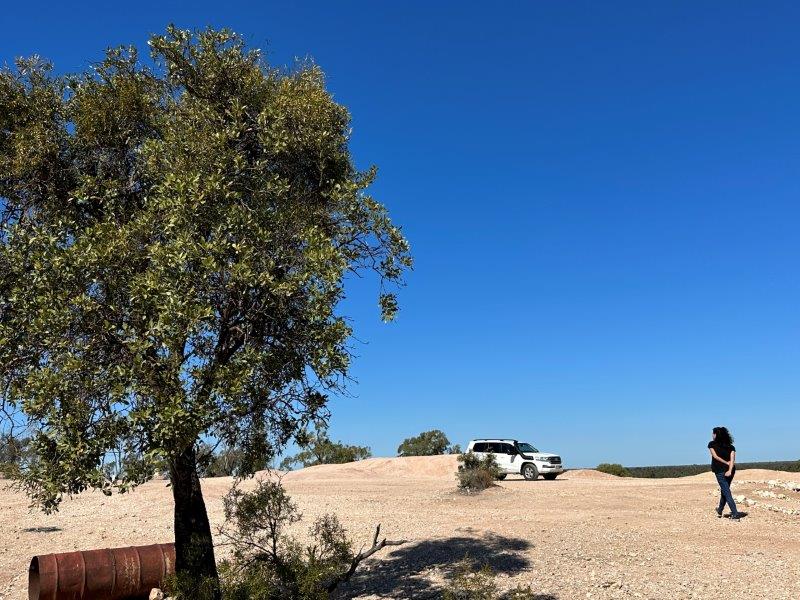
And in the middle of nowhere, a maze…
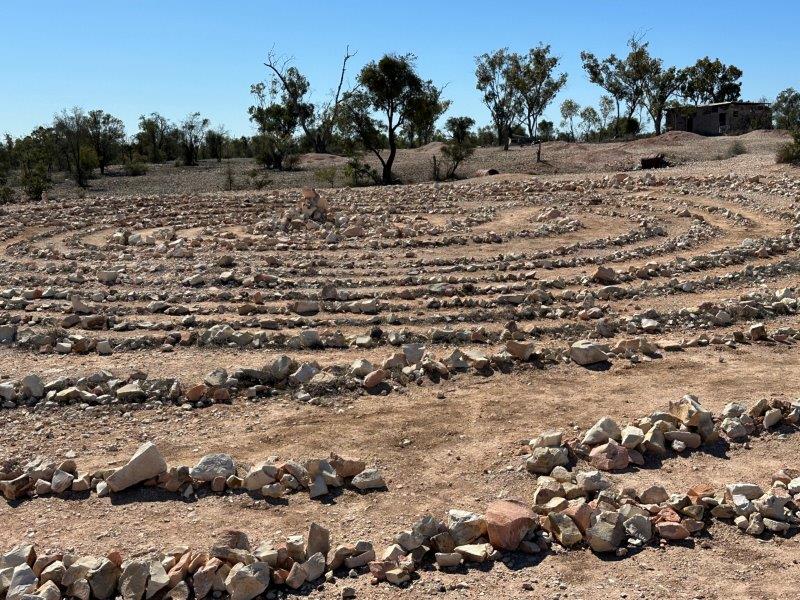
This cottage was built of beer cans and a few wine bottles. My fishing mate could have had a castle by now if he kept all his beer cans.
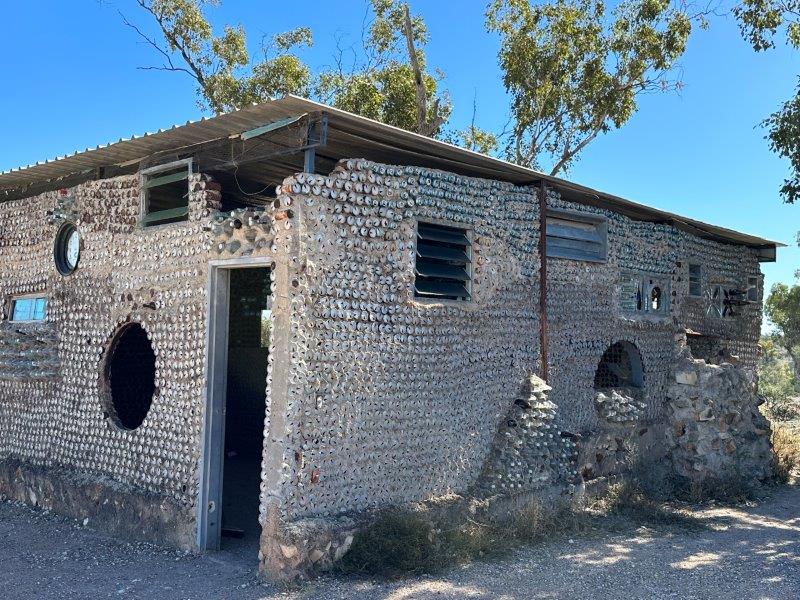
How is this for a window?
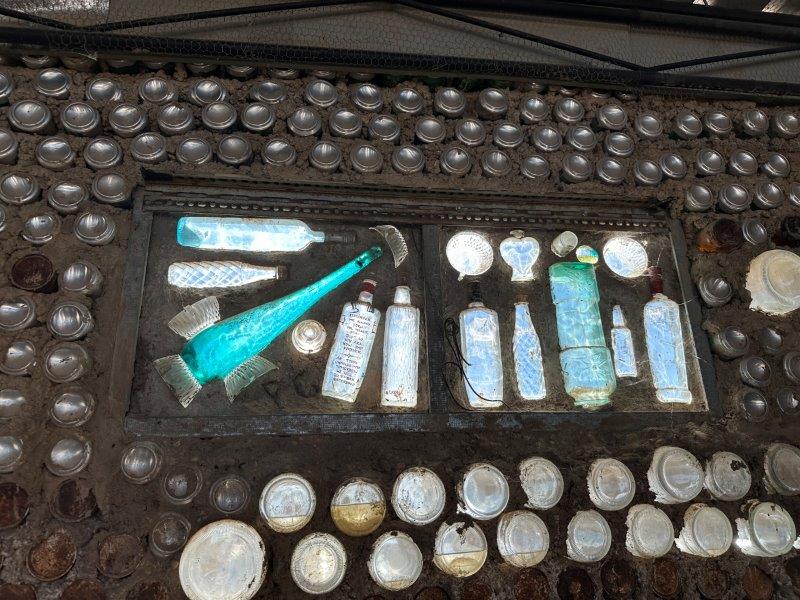
After a jaw-dropping day in Lightning Ridge we headed back to Walgett and got ready for a travel-day the next morning. We moved on to a free camp at Gum Flat Reserve on the Gwydir River where we stayed for four days with great views of the river.
Between Moree and Inverell we drove past R2D2’s little brother R2B2. This robot was created by the local school as part of a “Bee Creative Challenge” at the 2022 Honey Festival.

Next stop was Joseph Wills Park, situated on the Macintyre River, just east of the town Inverell. Joseph Wills was a local shepherd that discovered tin in the area in 1870. A businessman offered Wills an “income for life” arrangement if he would share the location of the tin deposits. After his passing 3 years later, in 1873, his friends made the following inscription on his tombstone:
“Here lieth poor Wills who found out tin,
But very little did he win;
He paved the way for others’ gains,
And died neglected for his pains.“
This crystal clear river is home to fresh water trout. Not a bad backyard…

From here we headed north, closer to the Queensland border, and stopped along the way at Deepwater Common Ground. After two days we headed up to Woodenbong to do a bit of life admin and pick up some parcels from the local post office. While traveling we have an Australian Post App where we can track and redirect parcels to post offices ahead of us.
We set up camp and waited for our deliveries amongst cattle paddocks.
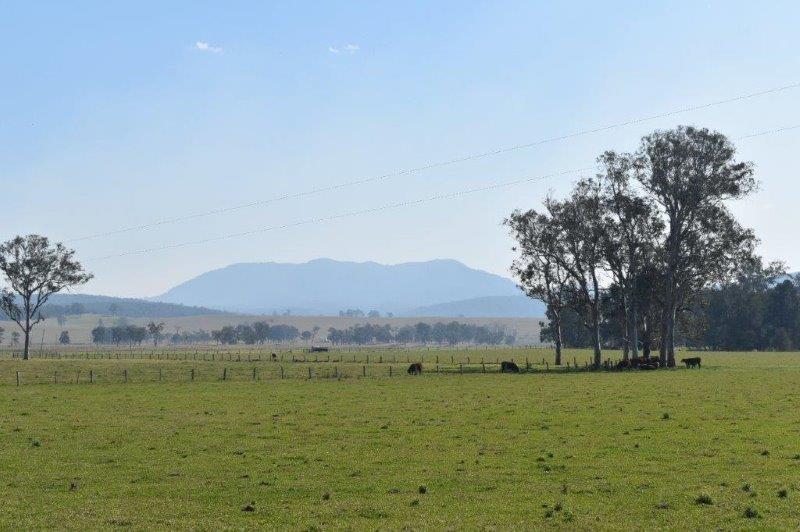
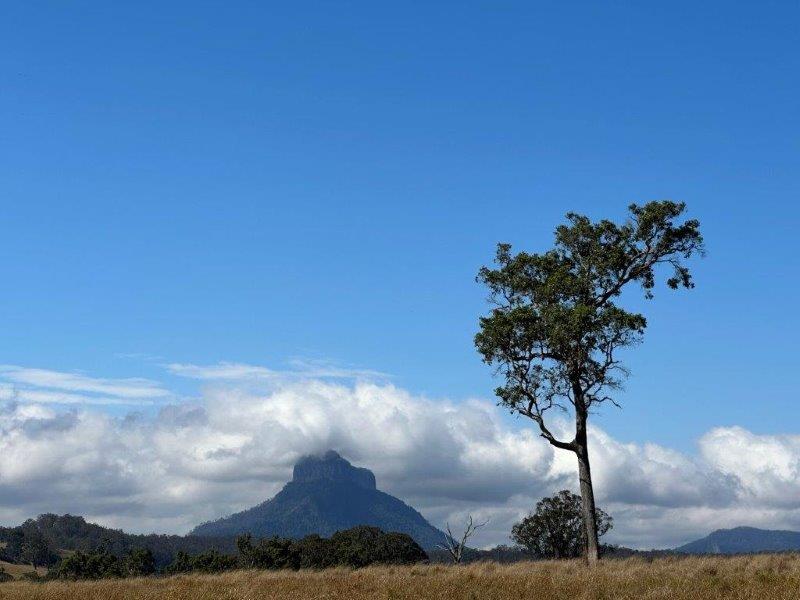
We took some time to plan and book our camp sites for the next few weeks. We do not like to plan so far ahead, but with school holidays coming up we had no choice. We also had some time to explore the area around Woodenbong.
Tooloom Falls was closed for camping but we were able to walk to the falls.
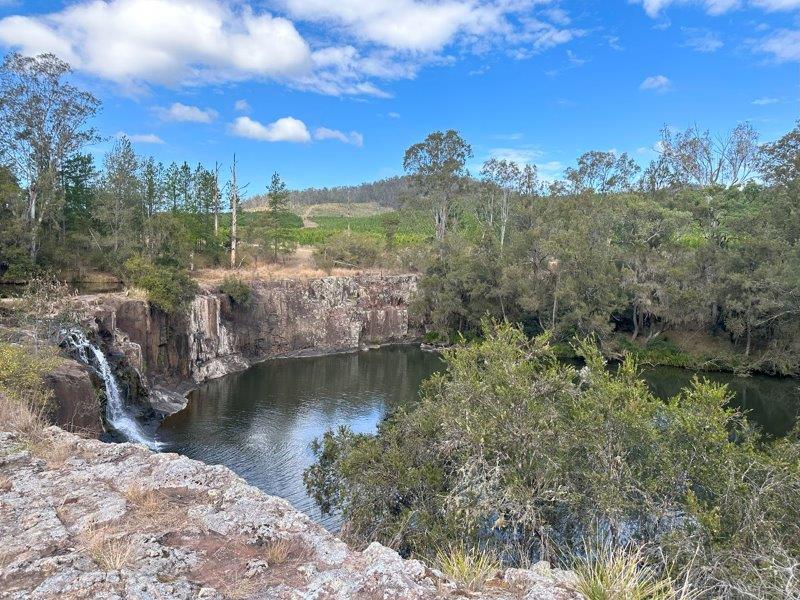
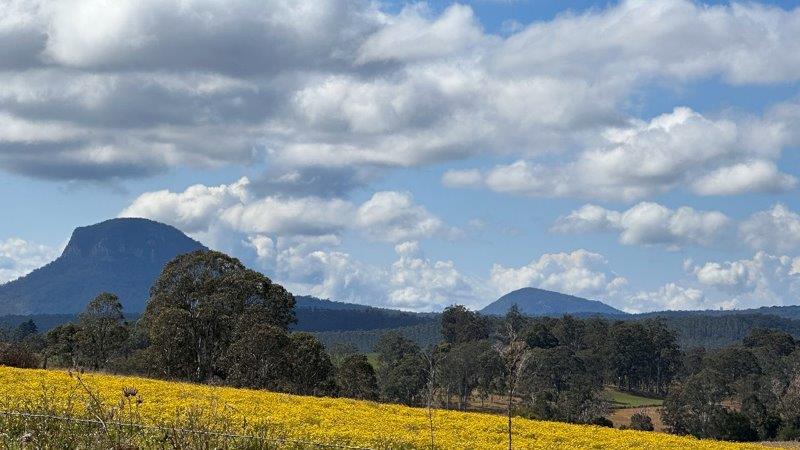
Bean Creek Falls had just a trickle of water by the end of the dry season.
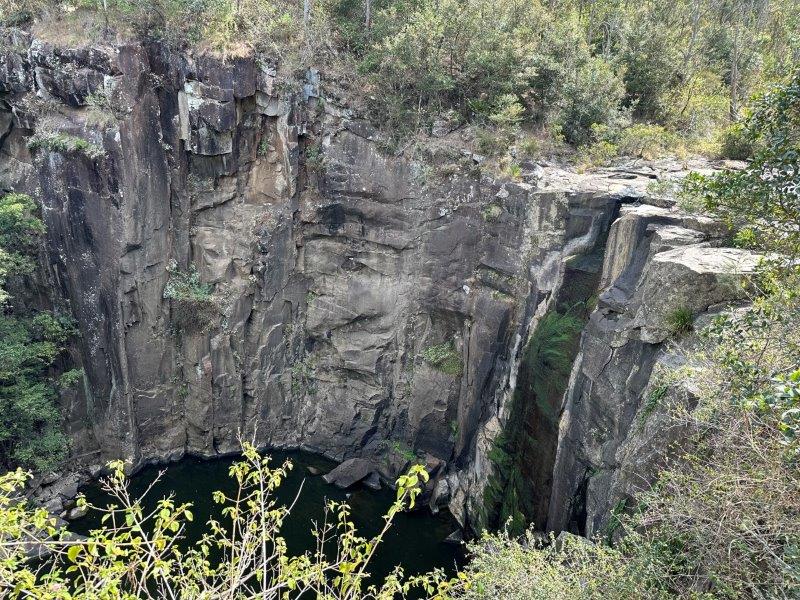
Although Woodenbong is in New South Wales, it was close enough to Brisbane for family and friends to visit us. We thoroughly enjoyed catching up with everyone and slowing down a bit.

Next up we’ll be heading south. Let’s hope the Spring weather warms up as we reach the coast!

